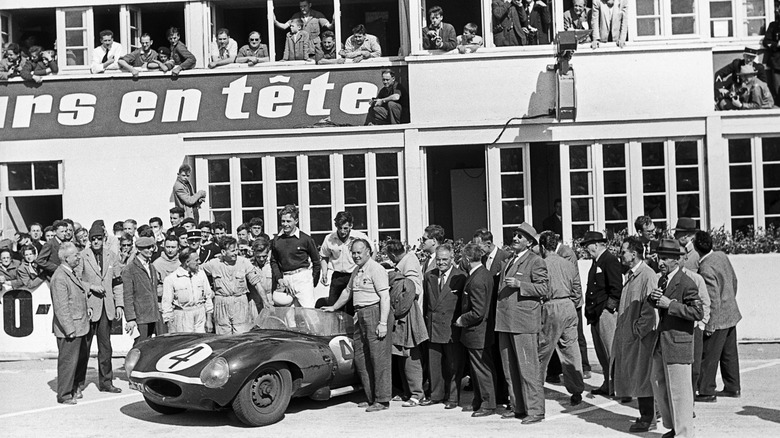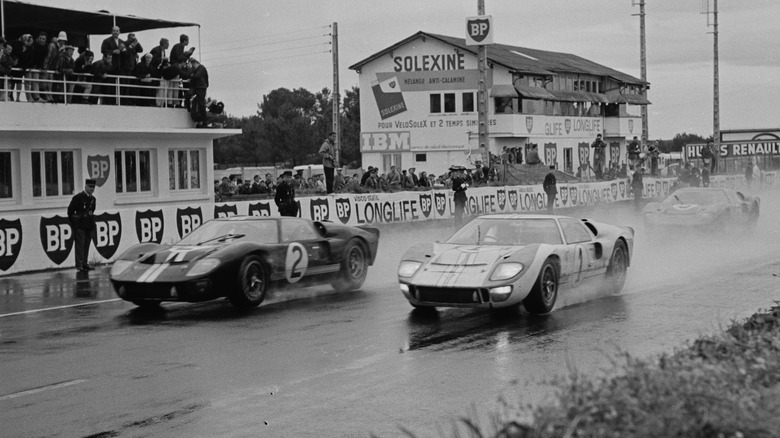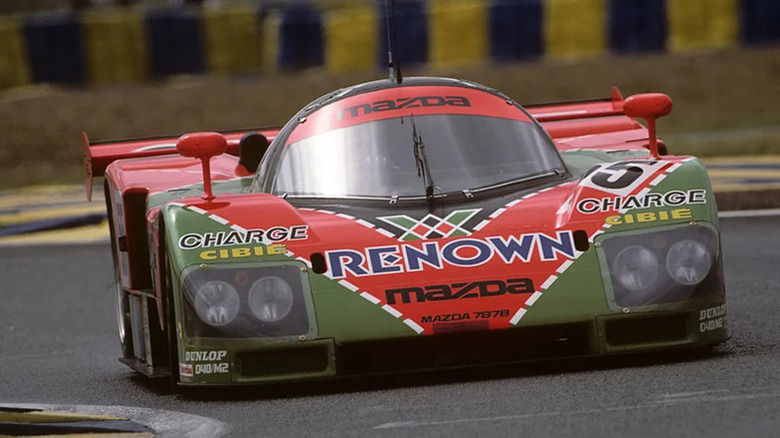I have a long personal history with auto racing. My grandfather on my mother’s side, Samuel Castranova, raced on wooden tracks in Pennsylvania and New Jersey in the 1920s and ’30s and captivated me as a youngster with tales of pit lane engine fires, leather helmets, and racing at speeds upward of 100 miles per hour. That might seem pedestrian in an era where Indy cars routinely turn laps at more than twice that speed, but 100 mph was astonishing considering the technology in use at the time. Before I came to SlashGear, I spent several years covering Formula 1, NASCAR, IndyCar, and IMSA racing as a writer and photographer, indulging the love of the sport my grandfather instilled in me. One of the world-famous races that connects my grandfather’s era on the track with mine outside the catch fence is the 24 Hours of Le Mans, the endurance race that was first held in 1923 and has been the subject of numerous films, both dramatic and documentary.
The 24 Hours was sidelined in 1936 because of labor issues and from 1939 through 1948 due to World War II, but celebrated its centennial in 2023 with a dramatic race won by a Ferrari team of Alessandro Per Guidi, James Calado, and Antonio Giovinazzi by less than a minute and a half over Toyota’s Gazoo Racing entry. Ferrari bested Gazoo again this year, although it was by a less nerve-wracking margin of just over 14 seconds. In the previous century of overnight racing at Le Mans, there have been countless heart-stopping moments. These five stand out for reasons that will become clear as you read on.
Bentley drivers recovered from a crash to win by 20 laps in 1927
One of the most unlikely wins at the 24 Hours of Le Mans came in the race’s fifth running in 1927. That year, Bentley entered three cars, but two were knocked from the race after being caught up in an early seven-car wreck. The third Bentley, driven by Sammy Davis, could not avoid the wreck and his car took significant damage to the front axle and body, including a smashed headlight. At the time, Le Mans regulations required the drivers to perform all repairs with tools carried in their car, so Davis and co-pilot Dudley Benjafield had to fix the damage while chasing down an Aries with Robert Laly and Jean Chassagne behind the wheel.
By two o’clock Sunday afternoon, the Bentley had taken a 3 1/2 minute lead, and within the hour the Aries retired with a broken camshaft. By the time the checkered flag was waved, 13 of the 22 entrants had been eliminated due to accidents, mechanical failures, or disqualification. The winning Bentley crossed the line 20 laps ahead of the second-place entry. The Bentley’s improbable margin of victory measured nearly 350 kilometers and two and a half hours, and stands as the most lopsided Le Mans win to date.
[Featured image by Le Sport Universel Illustré via Wikimedia Commons|Cropped and scaled|Public Domain]
The fact that the 1956 race was even held was remarkable

Bernard Cahier/Getty Images
Motorsports history is dotted with tragedy, from these five notable Formula 1 on-track deaths to the crash that killed Dale Earnhardt, Jr. at Daytona in 2001. 1955 was an especially deadly year for race drivers and fans. Bill Vukovich was killed in a crash at that year’s Indianapolis 500, and the deadliest wreck in racing history came at the 1955 24 Hours of Le Mans.
Just as the first pit stops were getting underway, Pierre Levegh ran into the back of Lance Macklin, launching Levegh’s magnesium-bodied car into the packed grandstand, where it exploded into a deadly fireball. Levegh was killed instantly, and the debris from the crash and resulting fire took the lives of dozens of spectators (reports put the number of fatalities at between 65 and 130). The race carried on so emergency crews could attend to the dead and wounded, but the two noteworthy crashes put a damper on the global enthusiasm for auto racing.
The next year, repairs to the grandstand delayed the race until the last weekend of July, when Jaguar took its second of three straight wins at Le Mans and its fourth in six years. The winning entry was a Type D piloted by Ron Flockhart and Ninian Sanderson, who finished one lap ahead of Stirling Moss and Peter Collins in their Aston Martin DB3S. The winning D-type sold at auction in 2016 for more than $22.5 million, making it the priciest Jaguar ever.
Ford took Ferrari down in 1966

Reg Lancaster/Getty Images
The story of the 1966 24 Hours of Le Mans was told in the 2019 film «Ford v. Ferrari,» but the story of that dominant performance by the Ford team begins in 1963. That year, Ford made a bid to buy Ferrari, but Enzo Ferrari bailed on the deal, angering Ford chairman Henry Ford II. Ford made a vow to beat Ferrari at Le Mans, and hired legendary automotive design guru Carroll Shelby to head up Ford’s Le Mans team. Neither Ford GT40x finished the 1965 race, so Ford ordered a redesign of the car for 1966, and the Mark II GT40 was born. In that year’s race, none of the three Ferrari P3s were able to finish, and by the race’s final laps the two Shelby American team GT40s were running nearly even in compliance with team orders.
In the race’s rainy final hour, Ken Miles backed off the throttle to allow Bruce McLaren to catch up for a finish that would allow photographers to capture both Fords in a single frame. After the photo finish, McLaren and Chris Amon were given the win over Miles and Denny Hulme because they had started further back and so technically had covered a longer distance during the race. Ronnie Bucknum and Dick Hutcherson finished third in the No. 3 GT40 mark II, and Ford established itself as the new team to beat at Le Mans with wins in 1967, 1968, and 1969.
The closest competitive finish ever came in 1969
In the 1969 race, the GT40 driven by Jacky Ickx and Jackie Oliver took the checkered flag 120 meters ahead of the Porsche driven by Hans Hermann and Gerard Larrousse. Setting aside the staged finish three years before, this is the closest margin of victory in the long history of the 24 Hours of Le Mans. Ickx had to overcome a slow first lap after protesting the race’s traditional start. Drivers were required to run across the track to their cars to begin the race, a tradition Ickx felt was unsafe. He walked to his car instead and took his time buckling in. Despite trailing the field, his decision was shown to be the right one when John Woolfe, who had taken part in the pre-race sprint and couldn’t get his safety belts properly fastened, was killed in a crash on the race’s first lap.
Woolfe’s death led to a rule change for 1970, when the footrace was eliminated and drivers started the race safely buckled into their cars. Slow and steady won the race for Ford in 1969, as the faster Porsches dropped out one by one with various mechanical issues. Hermann and Ickx swapped positions over the final laps, with Ickx taking advantage of fresh brake pads to dive hard into the Mulsanne curve on the final lap to take the lead for good.
Mazda made history on two fronts in 1991

Paul-henri Cahier/Getty Images
Mazda has produced more cars powered by the Wankel rotary engine than any other manufacturer, most notably the RX-7 and RX-8. Those two shared space on our list of the best rotary-powered cars ever with the 787B, a model built for the 1991 24 Hours of Le Mans that wound up making history. Mazda’s three entries finished first, sixth, and eighth that year, with the No. 55 car driven by Volker Weidler, Johnny Herbert, and Bertrand Gachot crossing the line ahead of three Jaguar XJR-12s. The winning Mazdaspeed 787B was the first Japanese-made car to ever win at Le Mans, and the only rotary engine-powered car ever to do so. New rules for sports car racing were already in place to mandate 3.5-liter piston engines, but not enough compliant entries were ready for the 1991 race, so cars that met prior Group C standards were allowed to start from the sixth row back.
The No. 55 logged the 12th fastest speed in qualifying, but was bumped to 19th after the adjustments due to class were made. Its twin-rotor 26B engine was upgraded with ceramic rotor tips and a total of six spark plugs, which helped boost output to 900 horsepower. The engines were detuned to between 650 and 700 horses to save fuel and ensure they lasted the whole race. This proved to be more than enough to get the 787B across the finish line more than 63 kilometers ahead of the second-place Jaguar.